
MorganP
Members-
Posts
12 -
Joined
-
Last visited
Everything posted by MorganP
-
UFH Mixing Valve advice on Air Source Heat Pump set up
MorganP replied to MorganP's topic in Underfloor Heating
This is invaluable, thank you @Nickfromwales - there is a beer and a giant Toblerone waiting for you all if we should ever meet 👍 I do have one last question if I may. Would it be worth getting the whole setup repiped with a new manifold? Something like this which already has the pump and AAV included >> It also has a better looking mixing valve set up (mine is dropping 5+ degrees even when fully opened). -
UFH Mixing Valve advice on Air Source Heat Pump set up
MorganP replied to MorganP's topic in Underfloor Heating
Re. AAVs - does the system need to be drained first? And can any heating engineer do it? I'm near Newark, Notts and failing to get a good, local UFH engineer. Re. this: "3 lpm flow rate on the 12mm pipe is not too shabby tbh, and if the pump was zooted you’d not even have that. How old is the pump? Is it noisy?" I'm trying to get 3 lpm but failing! Two are slightly over 2 lpm but the rest are 2 or under. The pump is likely as old as the system - circa 2004. It's not noisy. Would it be worth changing at the same time as fitting the AAVs? -
UFH Mixing Valve advice on Air Source Heat Pump set up
MorganP replied to MorganP's topic in Underfloor Heating
My best guess is 12mm and 15mm - there are two different sizes. There are photos in this earlier post: -
UFH Mixing Valve advice on Air Source Heat Pump set up
MorganP replied to MorganP's topic in Underfloor Heating
Seems to only have 3 settings. Would a newer pump help do you think? And is the system pressure a factor do you think? -
UFH Mixing Valve advice on Air Source Heat Pump set up
MorganP replied to MorganP's topic in Underfloor Heating
I did think of that but it seems to be on full already - turned all the way up to 3 bars. -
UFH Mixing Valve advice on Air Source Heat Pump set up
MorganP replied to MorganP's topic in Underfloor Heating
Hello all - @Nickfromwales @JohnMo @John Carroll Now the temperature is finally dropping outside, I've been able to do some proper testing. I've hit two issues which I'm hoping you can help with. Firstly, my system doesn't have an option to turn the flow gauges. It seems I have to use a key to adjust under the actuators - see image. Let me know if I'm missing something. Secondly, I've adjusted under each actuator - turning counter clockwise - but it wont go much above 2 LPM for most loops. From John Carroll's earlier post I was hoping to get about 3. Is that a water pressure issue or something? The system was flushed of air last winter. -
UFH Mixing Valve advice on Air Source Heat Pump set up
MorganP replied to MorganP's topic in Underfloor Heating
Good point. The sink next to it already has hot water from the cylinder so this should be an easy option 👍 -
UFH Mixing Valve advice on Air Source Heat Pump set up
MorganP replied to MorganP's topic in Underfloor Heating
Thank you for the suggestion @MikeSharp01 - I've just ordered one. The wooden flooring is the same as before so I'm going to wait for the IR gun to arrive and then change flow rates to see what works. This is the reason we're no longer using them. They also miscalculated the energy load which meant the electrician on the day disabled our shower to bring it within acceptable levels! Another job on our list is to have the electricity upgraded to get our shower back. -
UFH Mixing Valve advice on Air Source Heat Pump set up
MorganP replied to MorganP's topic in Underfloor Heating
Thank you all for pitching in. I'll increase the loop flow and post back. Any further ideas in the meantime will be much appreciated. -
UFH Mixing Valve advice on Air Source Heat Pump set up
MorganP replied to MorganP's topic in Underfloor Heating
Thanks again @JohnMo - and @John Carroll This is very true. The flooring is 12mm oak laminate but we have a tiled utility room which is the warmest room downstairs! All zone stats are set at 20º during day / 17º at night. As the rooms rarely hit temp when it's cold, the ASHP runs all day - and often all night (racking up the leccy cost!). Not tried to measure temp but will have a go 👍 We had no issues at all when on oil - lovely and toasty with the kids frequently basking around on the floor enjoying the heat - good times! I never clocked the flow temp when on oil but I suspect they were a good deal higher - the mixing valve seem near fully open so I'm guessing around 40º - 45º. The setting on each flow meter hasn't changed since we installed the ASHP so I'll try increasing the loop flow to see if that helps - that seems the conclusion from @John Carroll post I'm assuming. May I ask how you bypassed it? Back to my original question - could I do this by removing the mixing valve? -
UFH Mixing Valve advice on Air Source Heat Pump set up
MorganP replied to MorganP's topic in Underfloor Heating
Thank you @JohnMo / @Nickfromwales - already really helpful and I'm thinking it's a different issue. Just to mention, with the recent warm weather it's not really an issue yet. It was a big headache all last winter though so I'm desperate to get it sorted before the weather sets in (and before my wife emigrates to Italy, leaving me with the kids). Fixed flow of 50 degrees at the mo. Tried everything last winter and that was the best setting. Weather compensation wasn't effective. The current performance is like this: - around 12 degrees outside and it'll struggle to hit room temp (20 degrees). Most rooms get to about 18 / 19. - 5-10 degrees outside and we'll be lucky to get 17 degrees room temp - anywhere near freezing and it's useless - 15 to 16 degrees at best. I'm afraid I don't know. Is that for the UFH or ASHP? The UFH was installed in the 00s long before we moved - based on an oil boiler. We installed the ASHP end of in 2023. Seems to be 34 degree flow - photo attached. Return is 30. Should that be enough? Is it one of these in the photo below? Mitsubishi Ecodan R32 / 11kw Pipes: Strange but there are two sizes. My best guess is 12mm and 15mm but see what you think from the photos. Floors: Two types - mostly wooden but two tiled. The tiled floors perform a lot better It's an overlay system using an insulation board - installed circa 2004 I think. Yeah this has me thinking now - photos attached and notes above. Should 34 degrees be enough to heat the house? And is the 4 degree difference between flow too little? The floor barely gets warm - especially the wooden one. We've insulated more, put up curtains over doors, draft proofed everywhere etc. No more options on that front now 🤷♂️ The pump is set to max at the mo - 2 instead of 1. But I've tried both settings and it doesn't make much difference. Thanks again -
This is my first time posting and a massive thank you to all those on here who have helped me on this and other topics 🙏 We had an Air Source Heat Pump fitted to replace our old oil boiler. Since the installation, the downstairs underfloor heating hasn't worked properly. Upstairs - running on rads - is lovely and toasty. The issue is a lack of heat going into the UFH circuit - especially around the mixing valve in the picture. The temperature of the pipe going in at the top of the value - coming from the ASHP - is lovely and hot. But what’s coming out at the bottom is quite a bit colder. Even fully open, the mixing valve is bleeding cold water into the circuit and lowering the temp way too much. The original installers suggested that it can be removed completely but I'd like some advice please. I have a really sound heating engineer who can probably remove and re-pipe it but he's not an ASHP or UFH professional. Can we remove the mixing valve completely? Do we need to add in something like a TMV? I've search on here but not quite found definite answers. Help would be greatly appreciated!

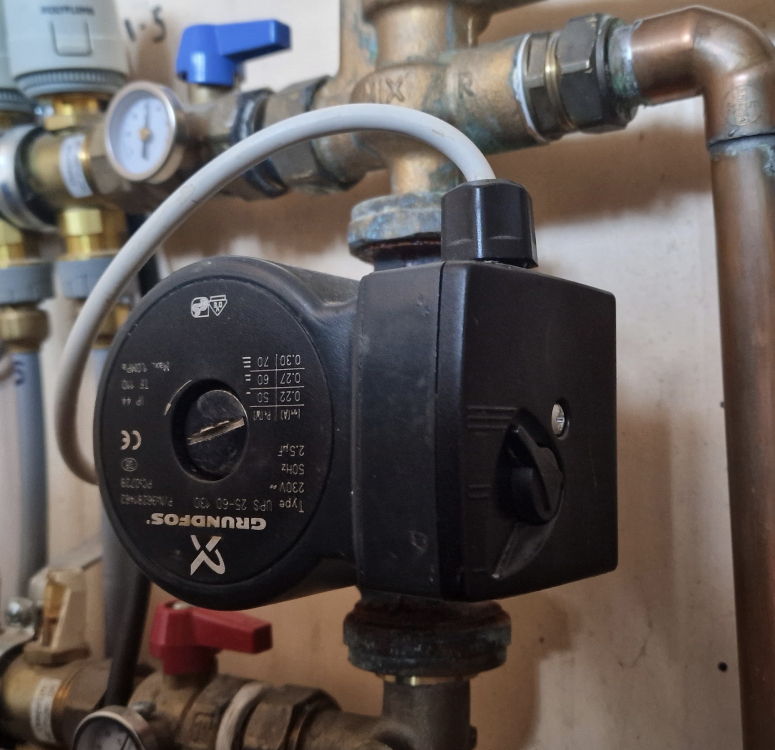
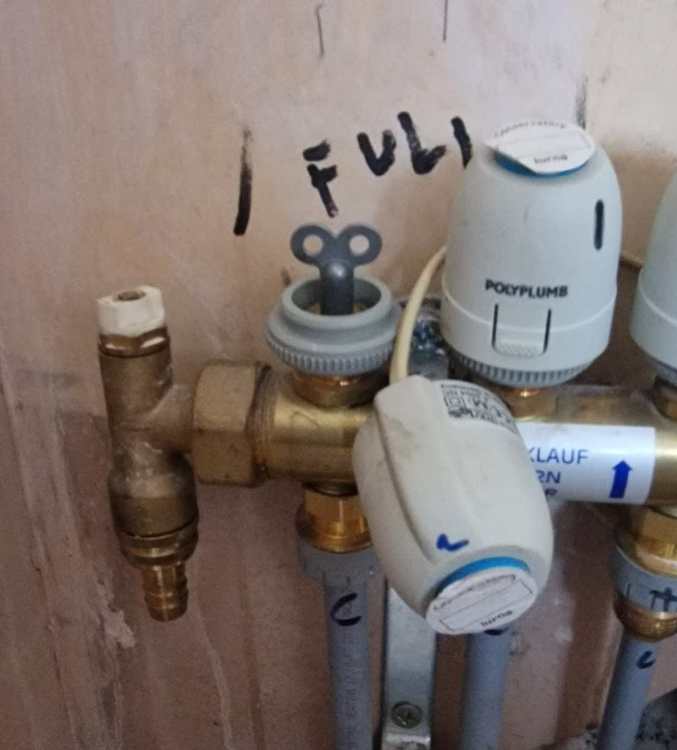

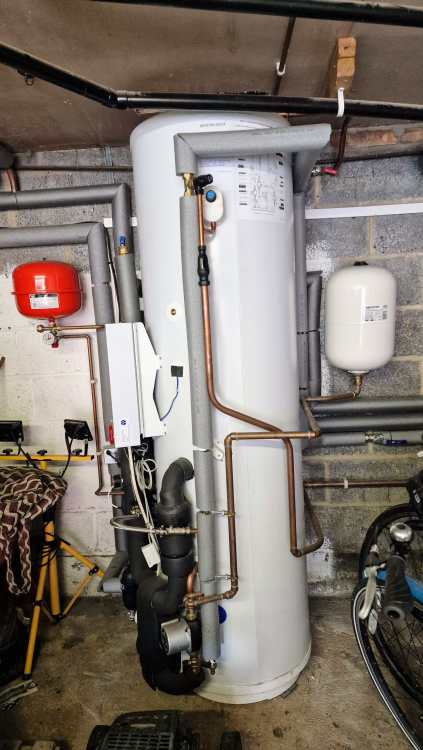

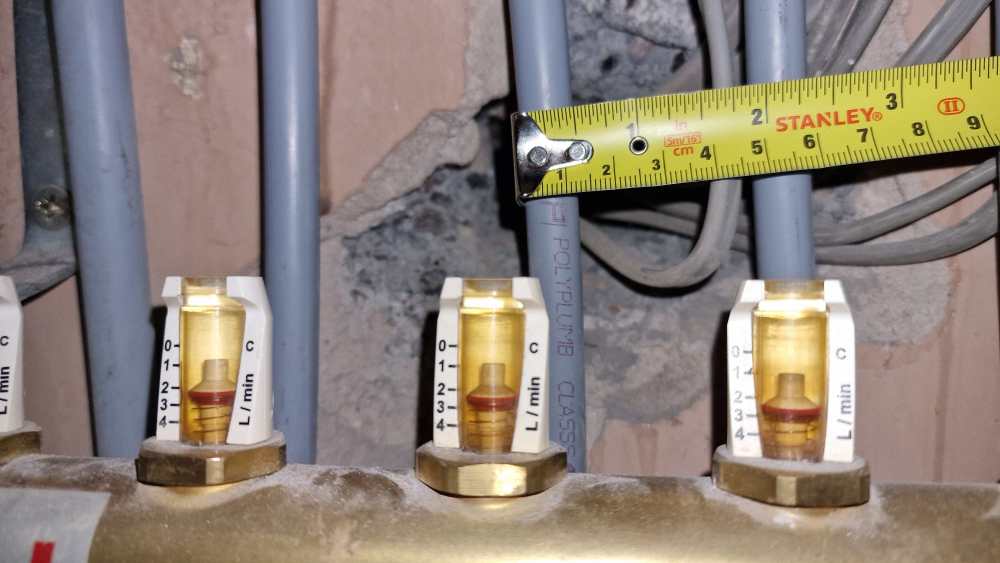
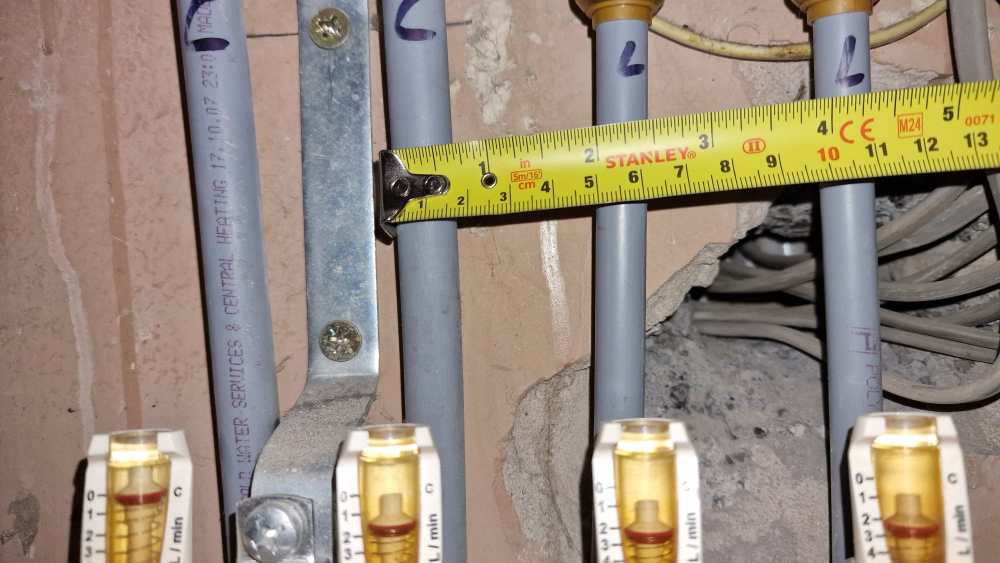
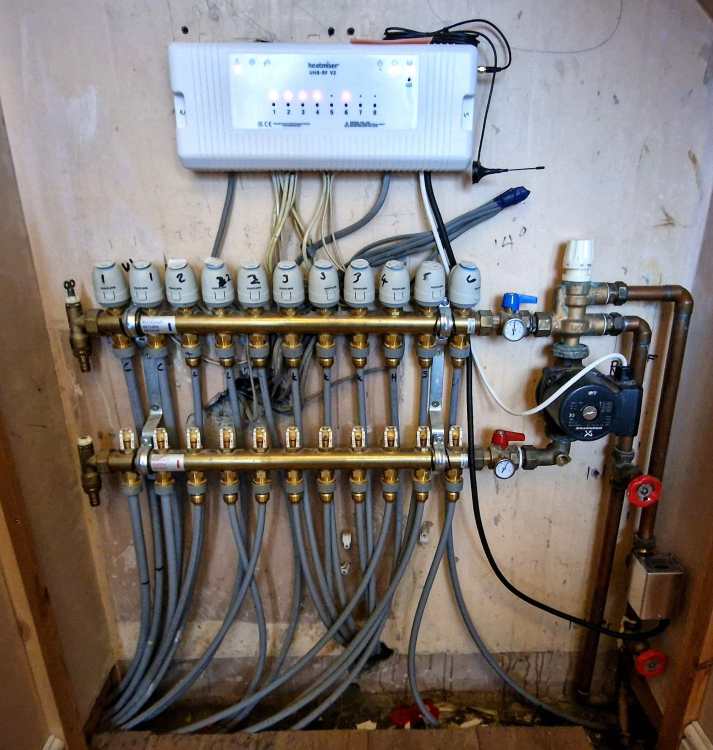
.thumb.jpeg.573c9403a5d733bc8b7a49c13927fceb.jpeg)